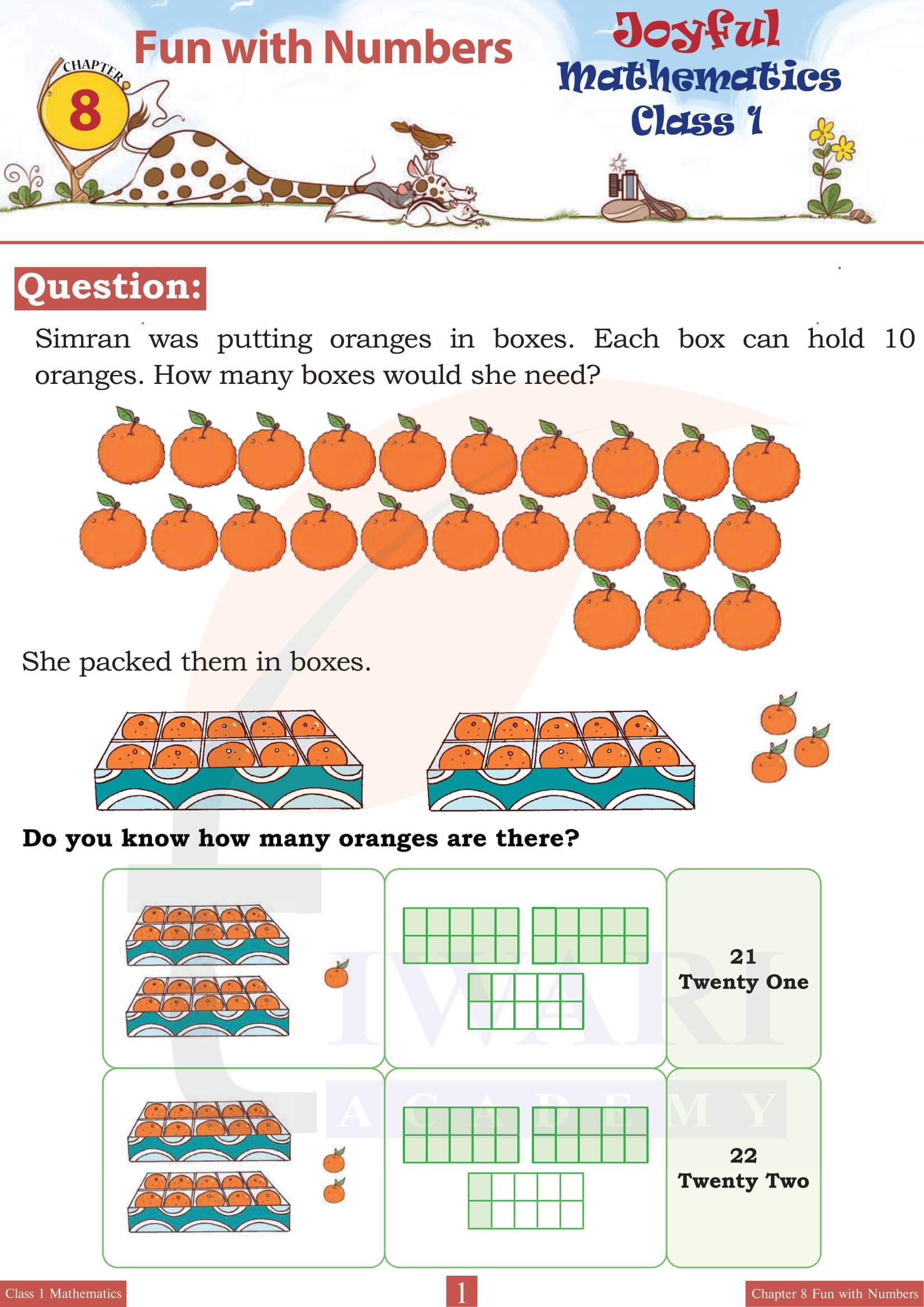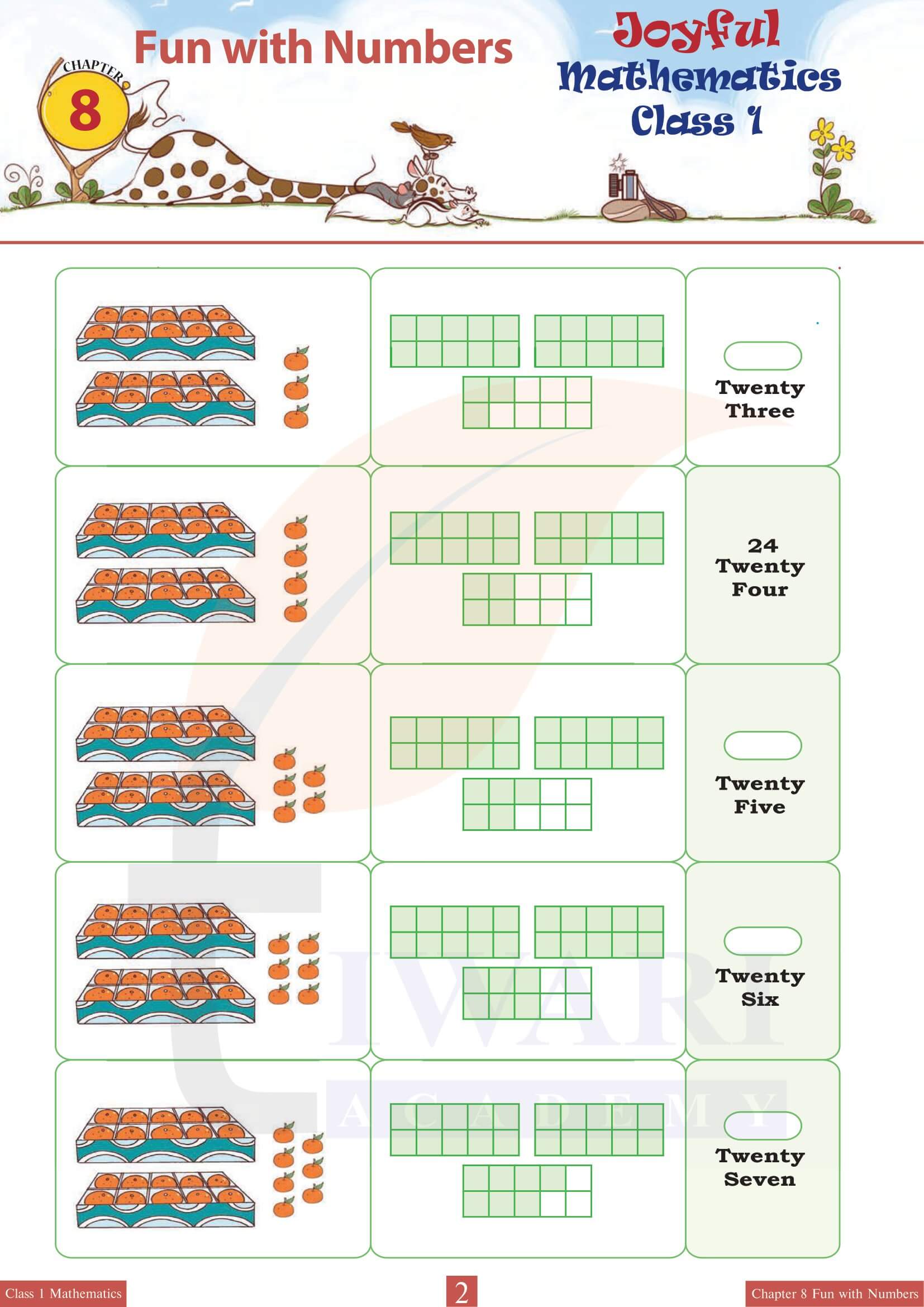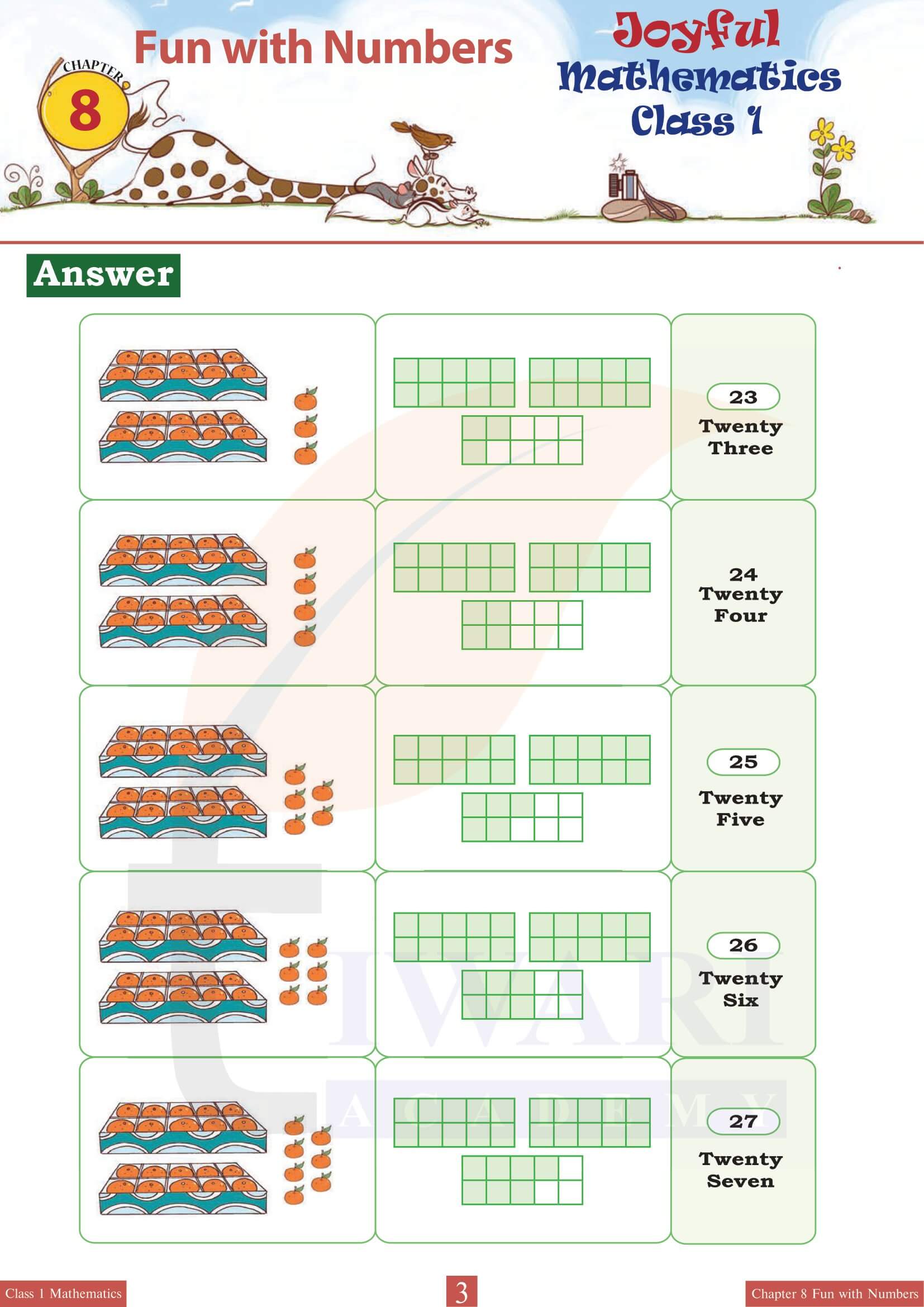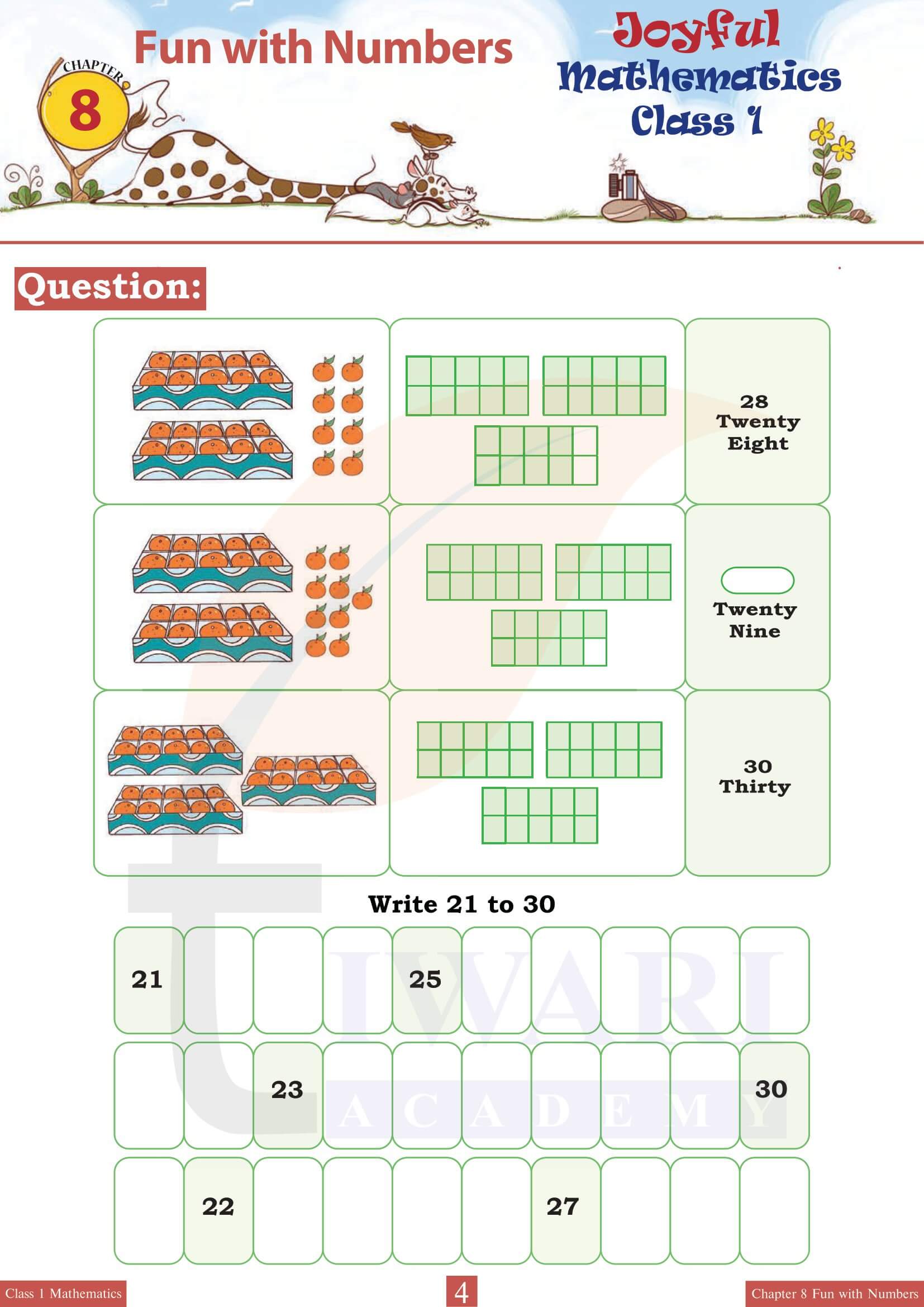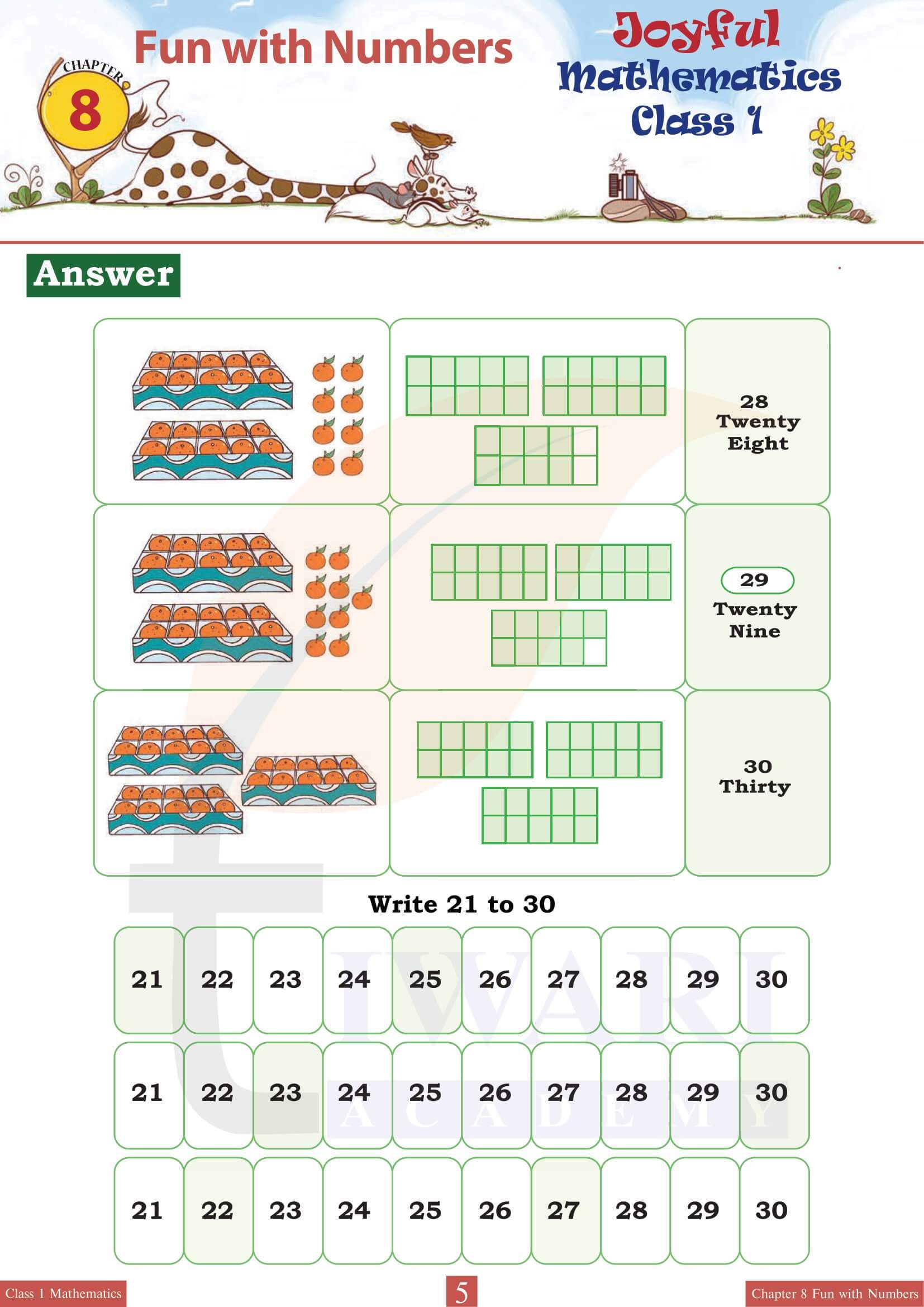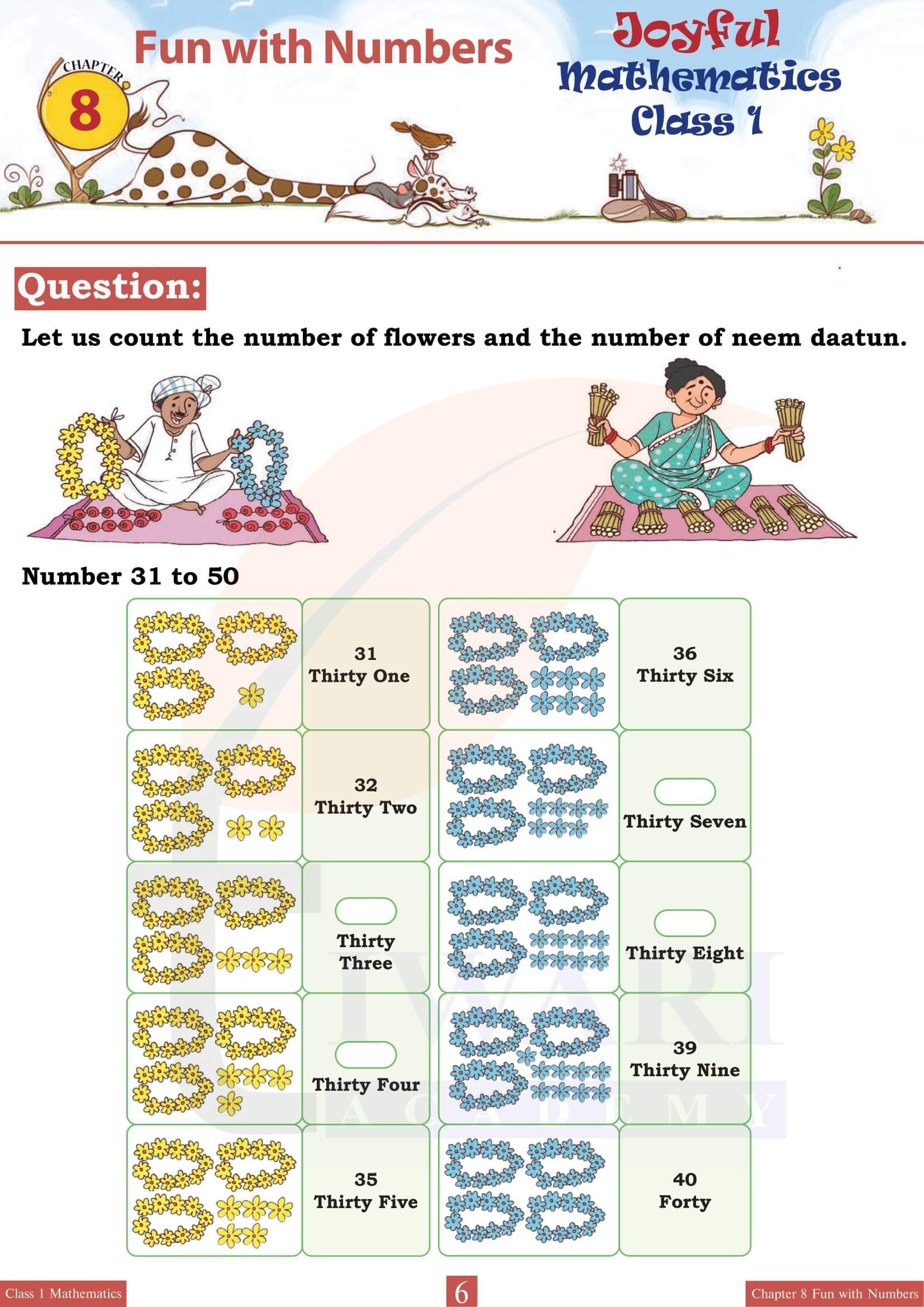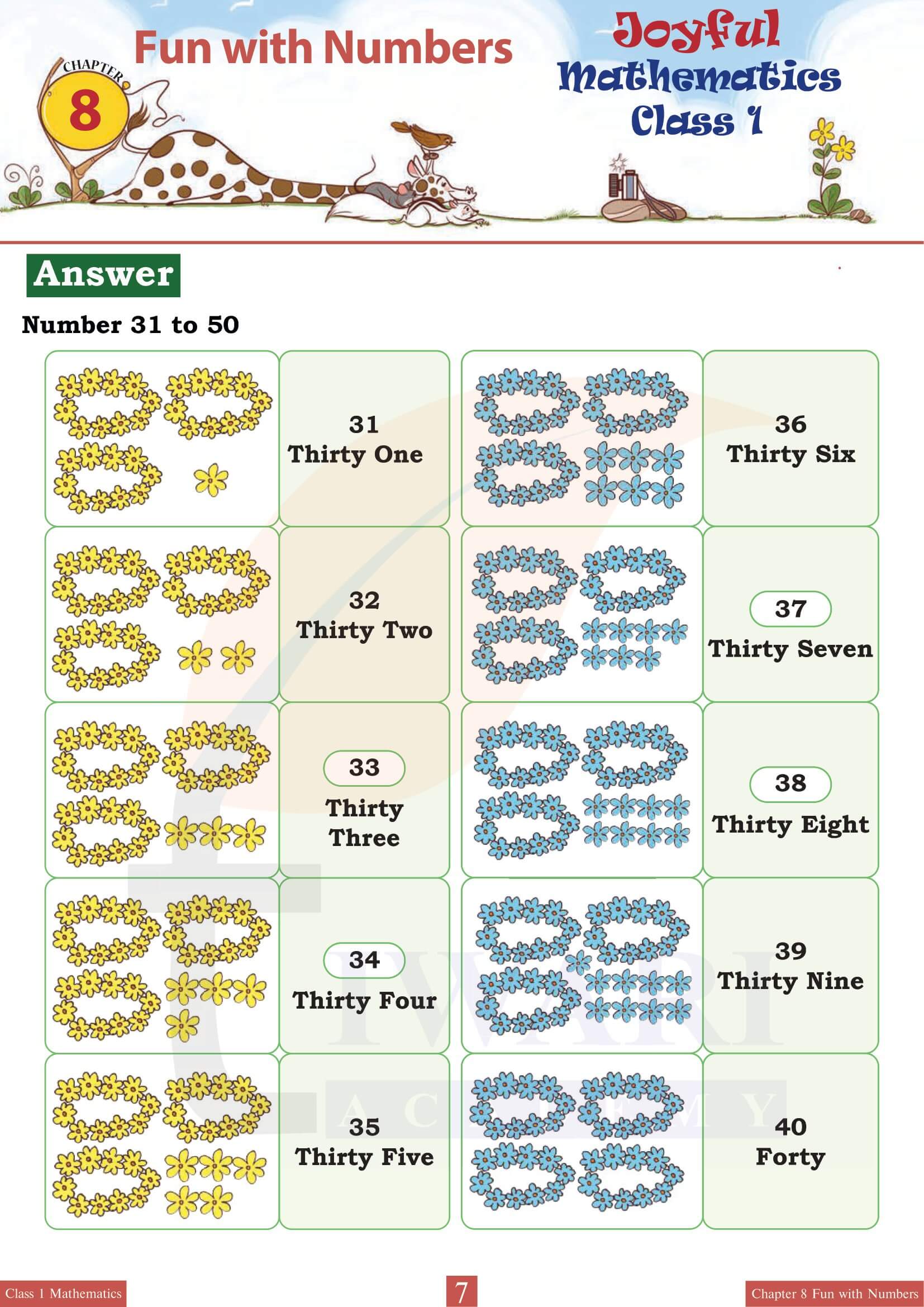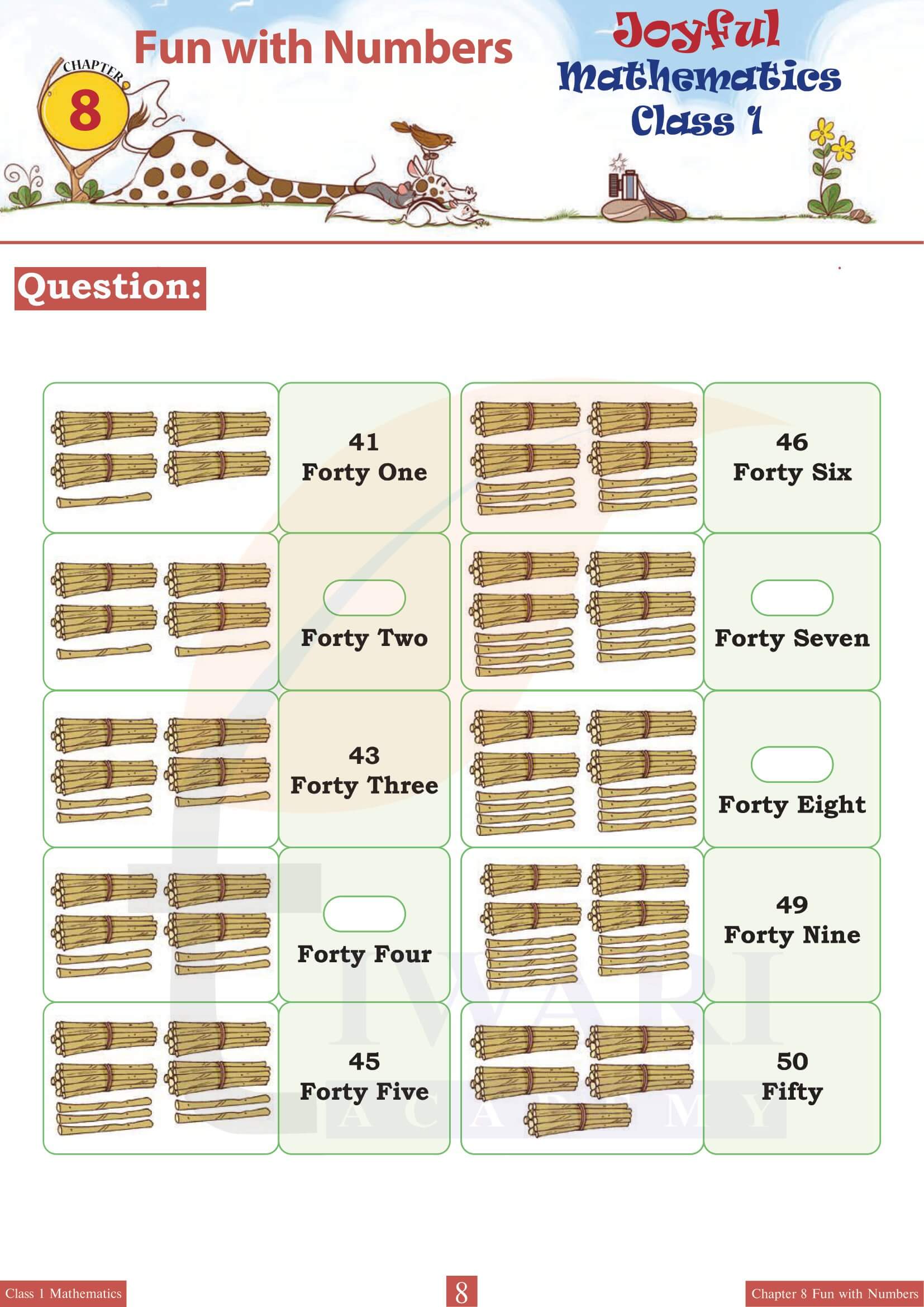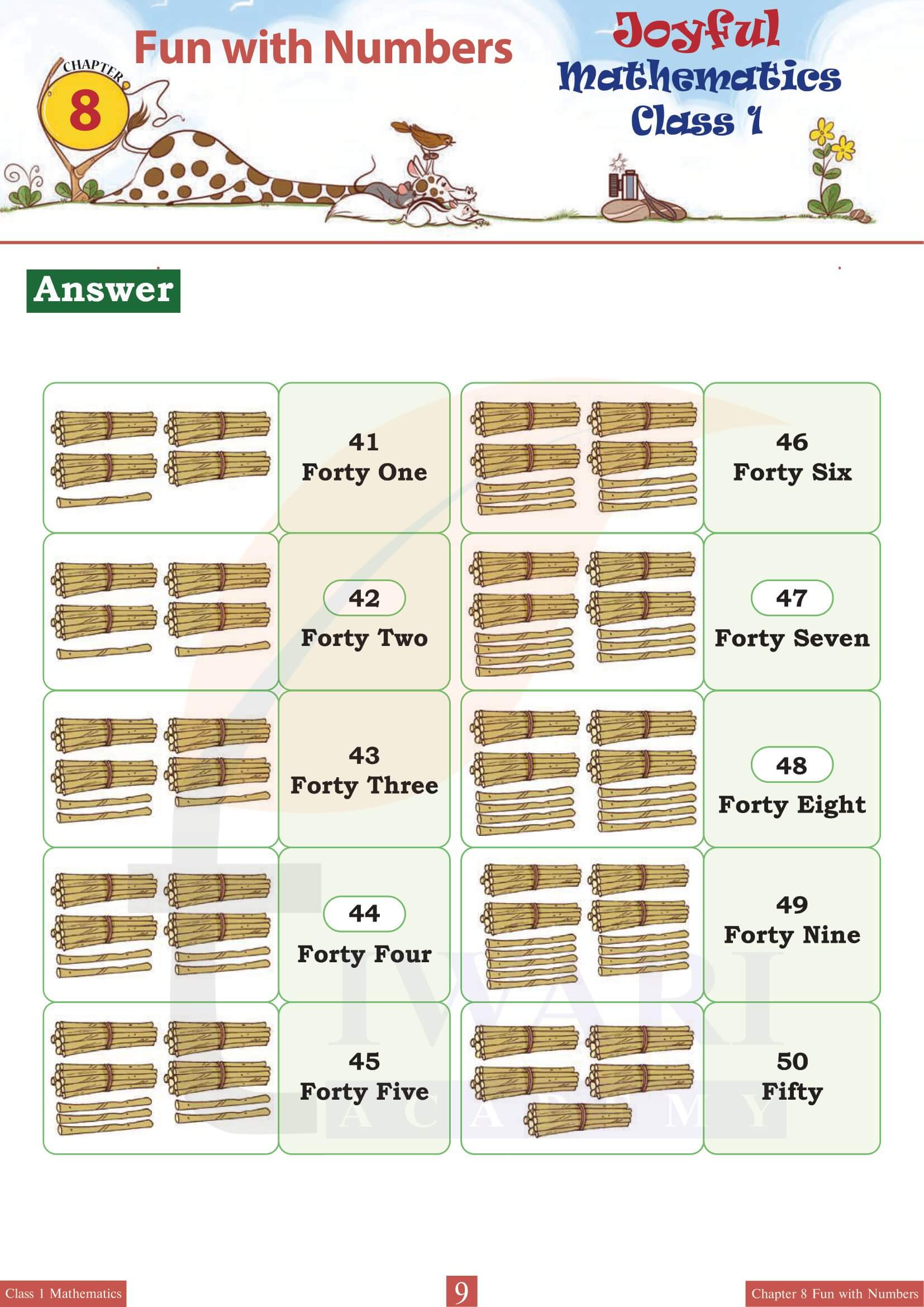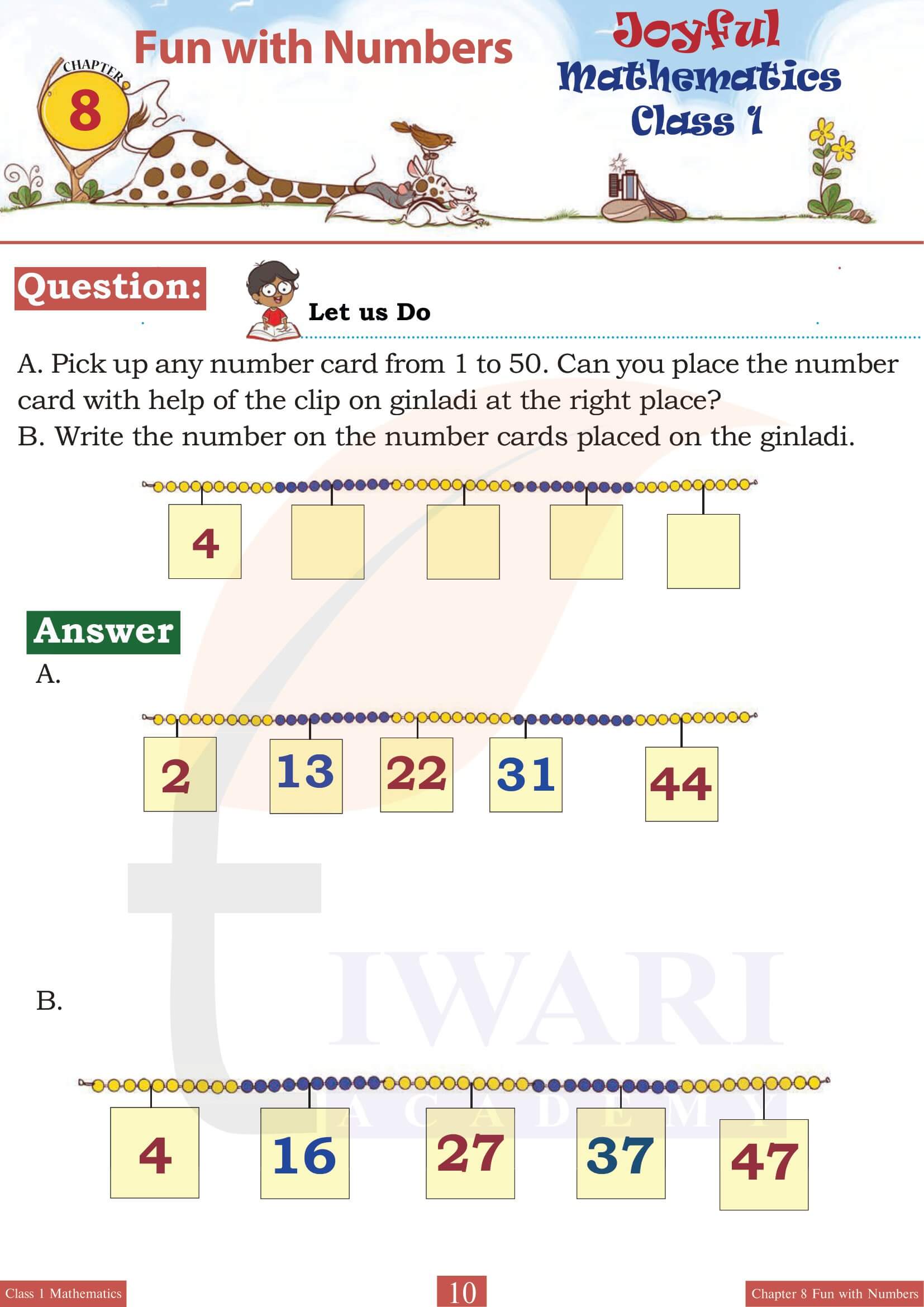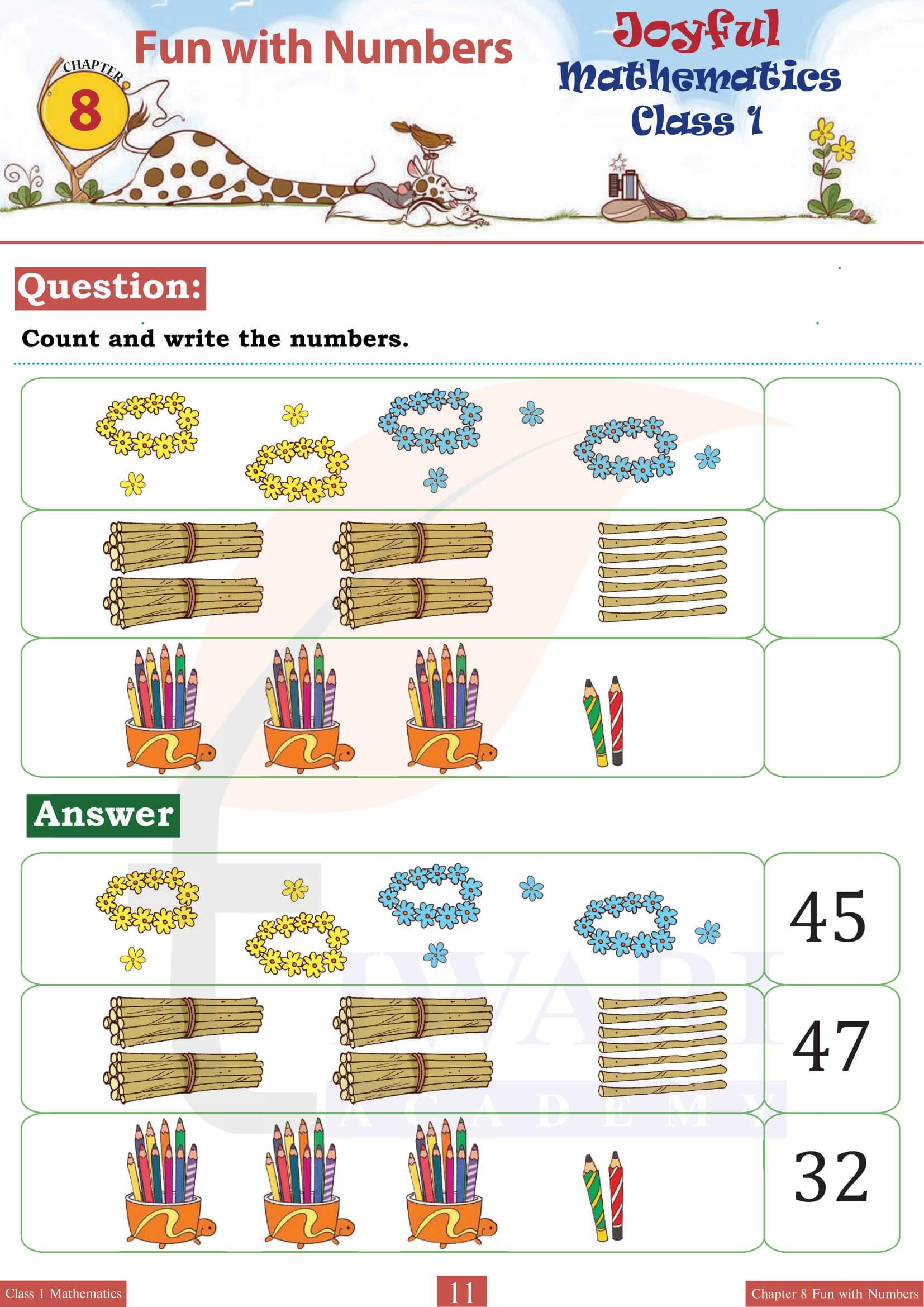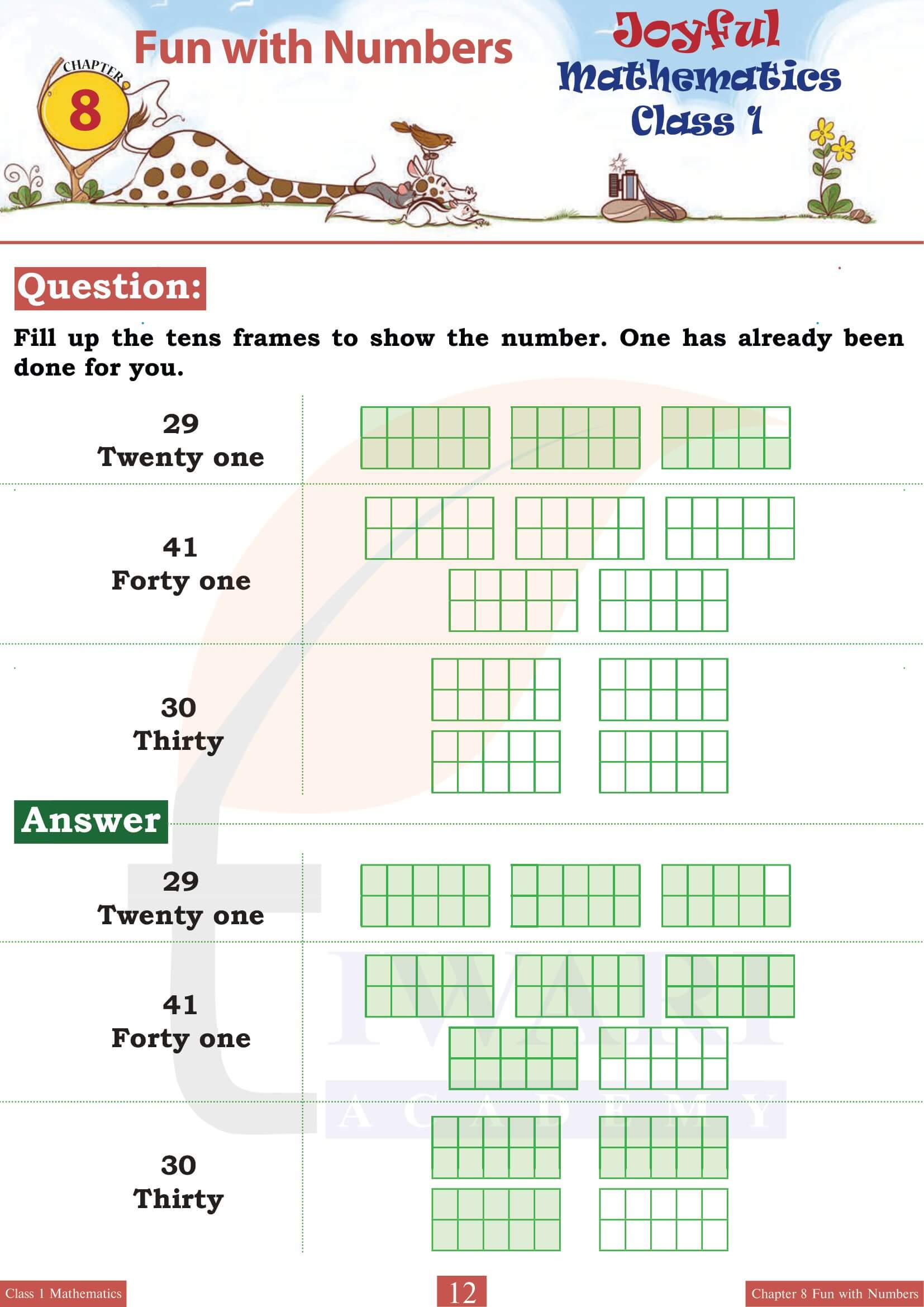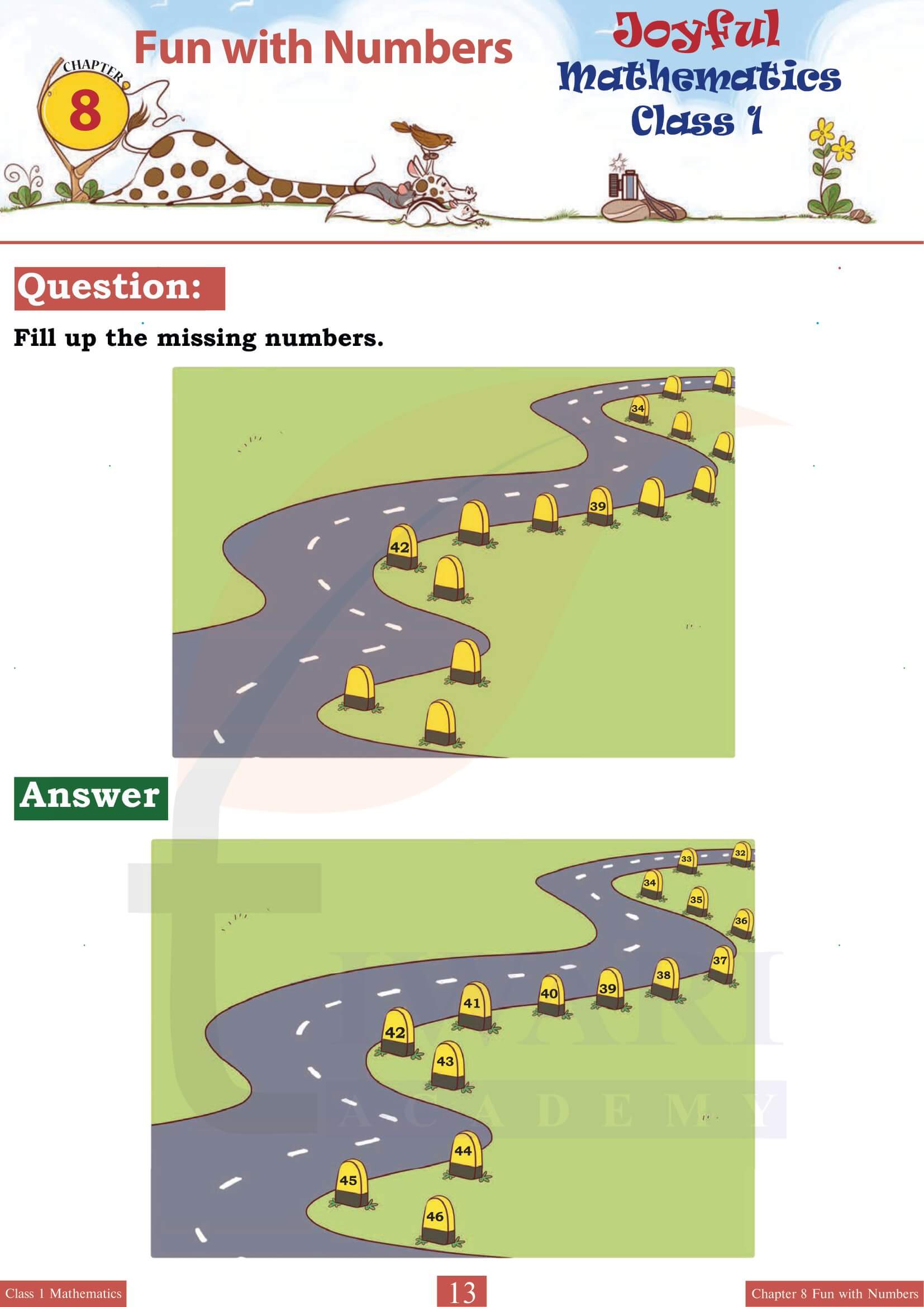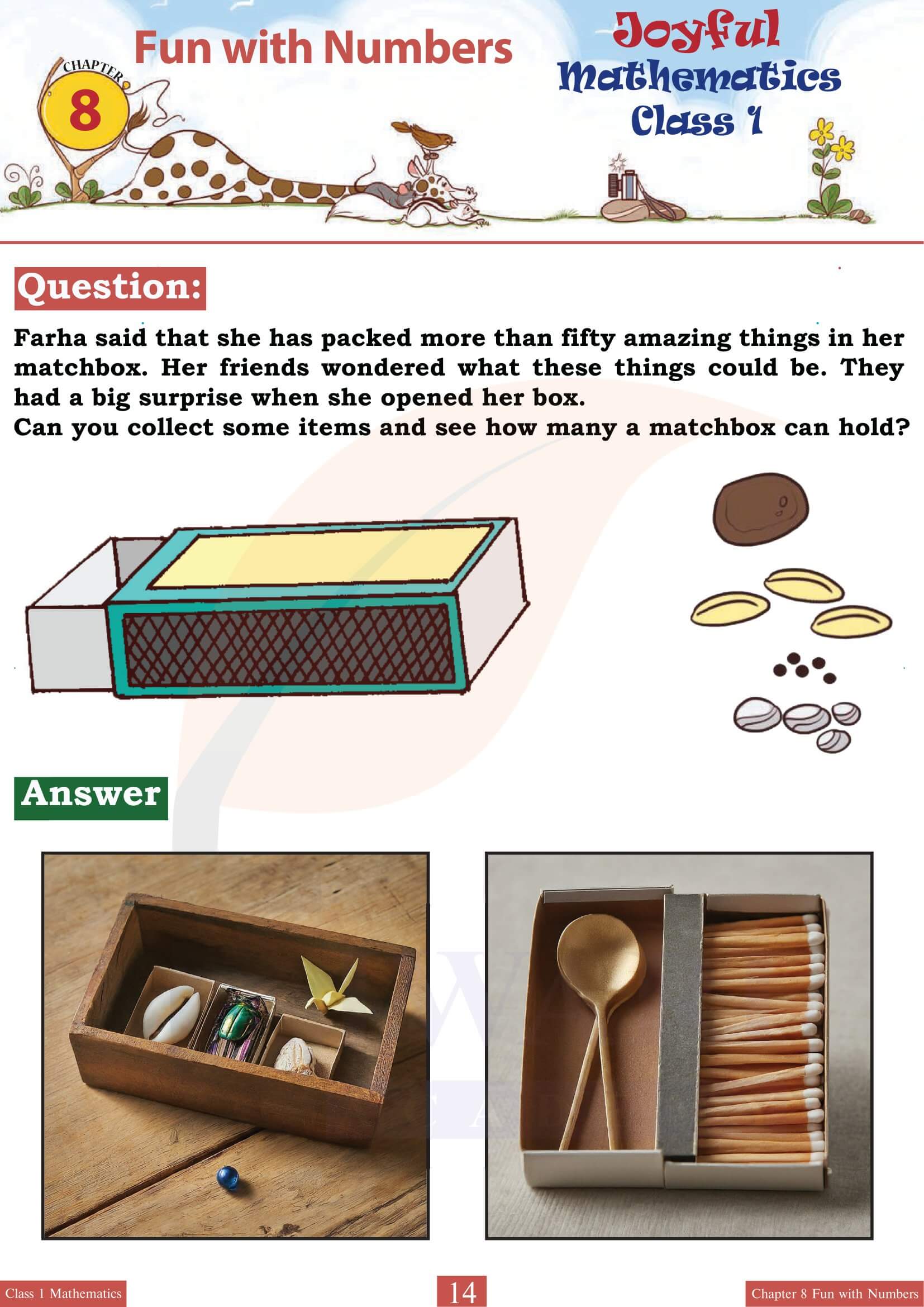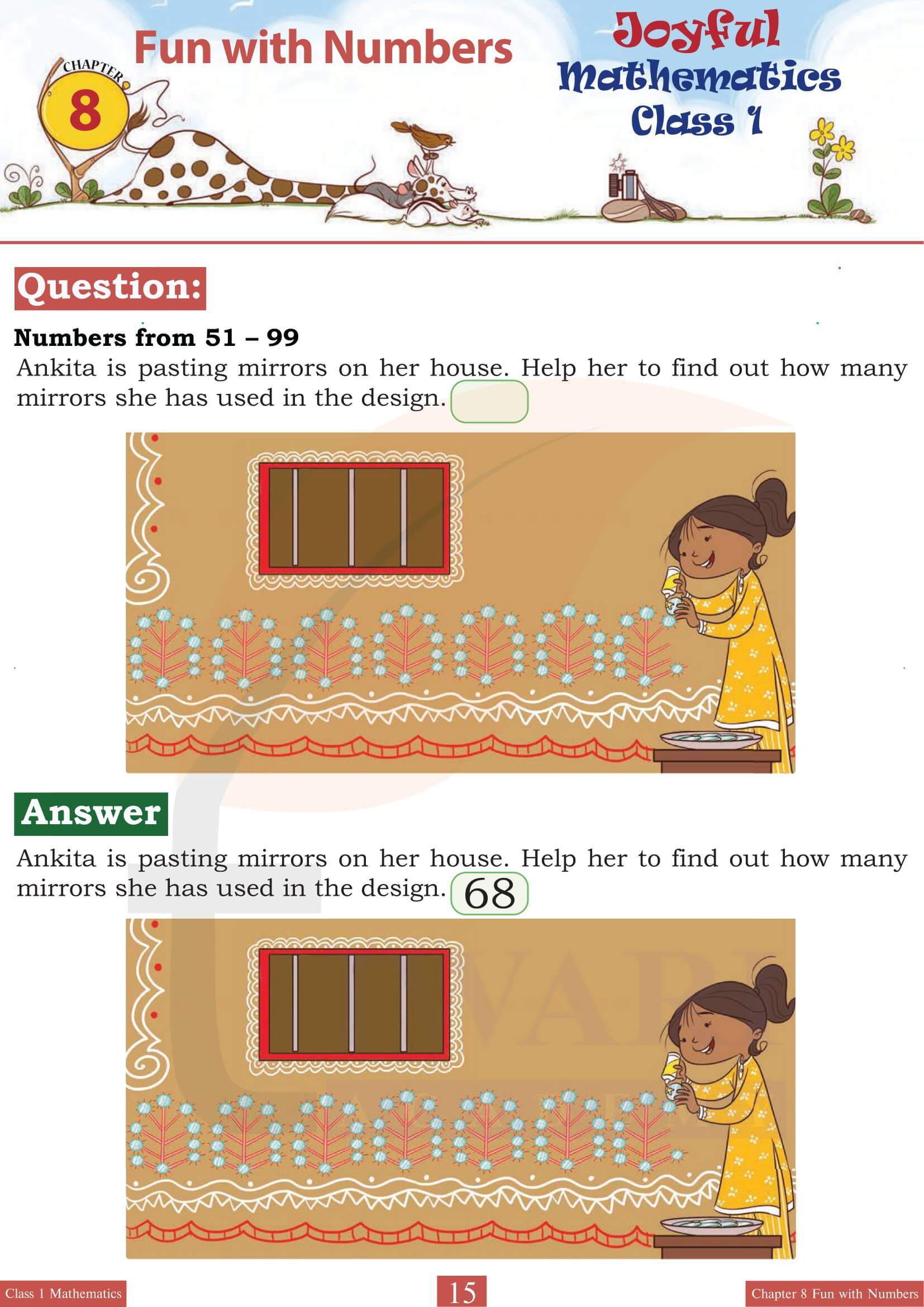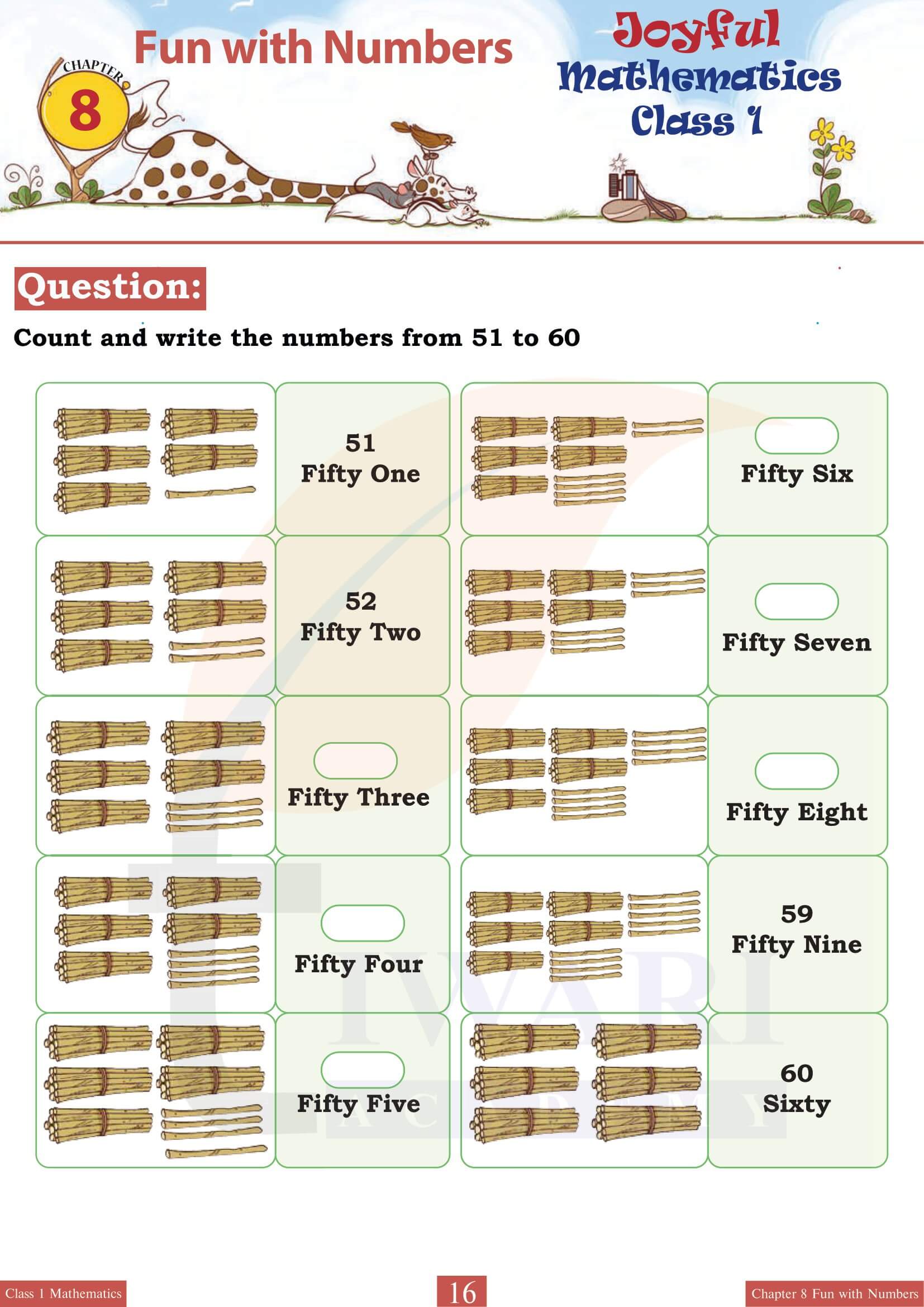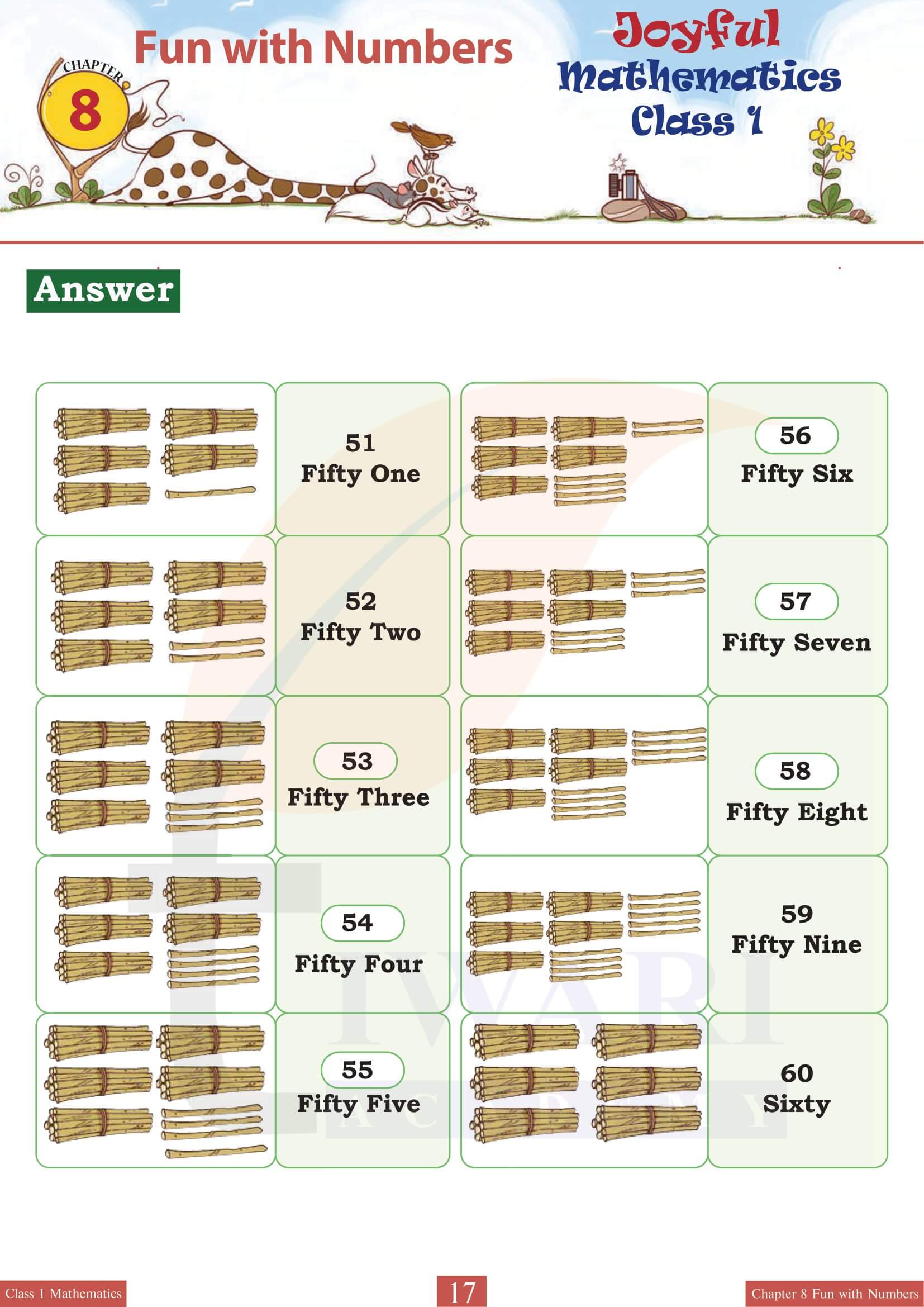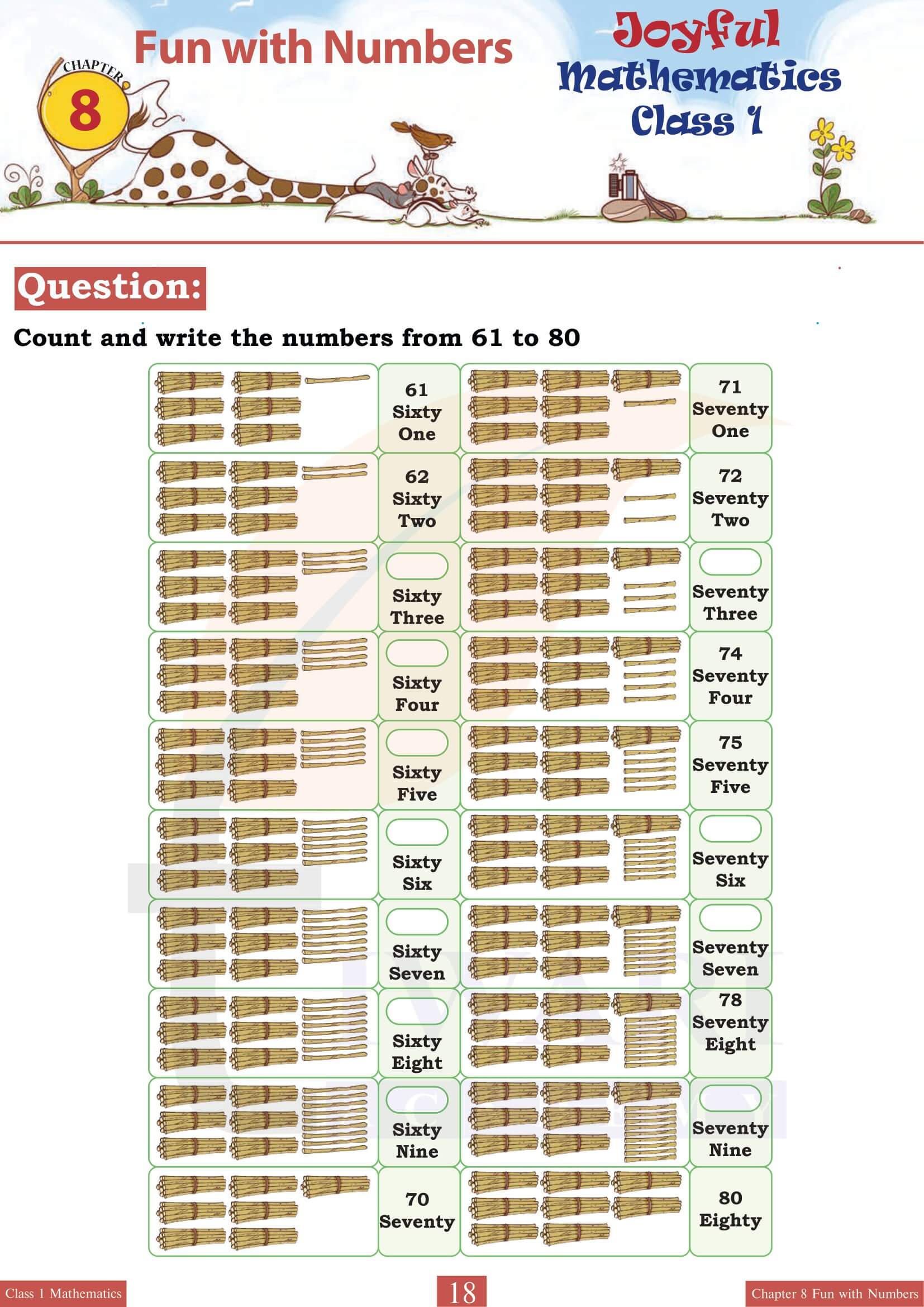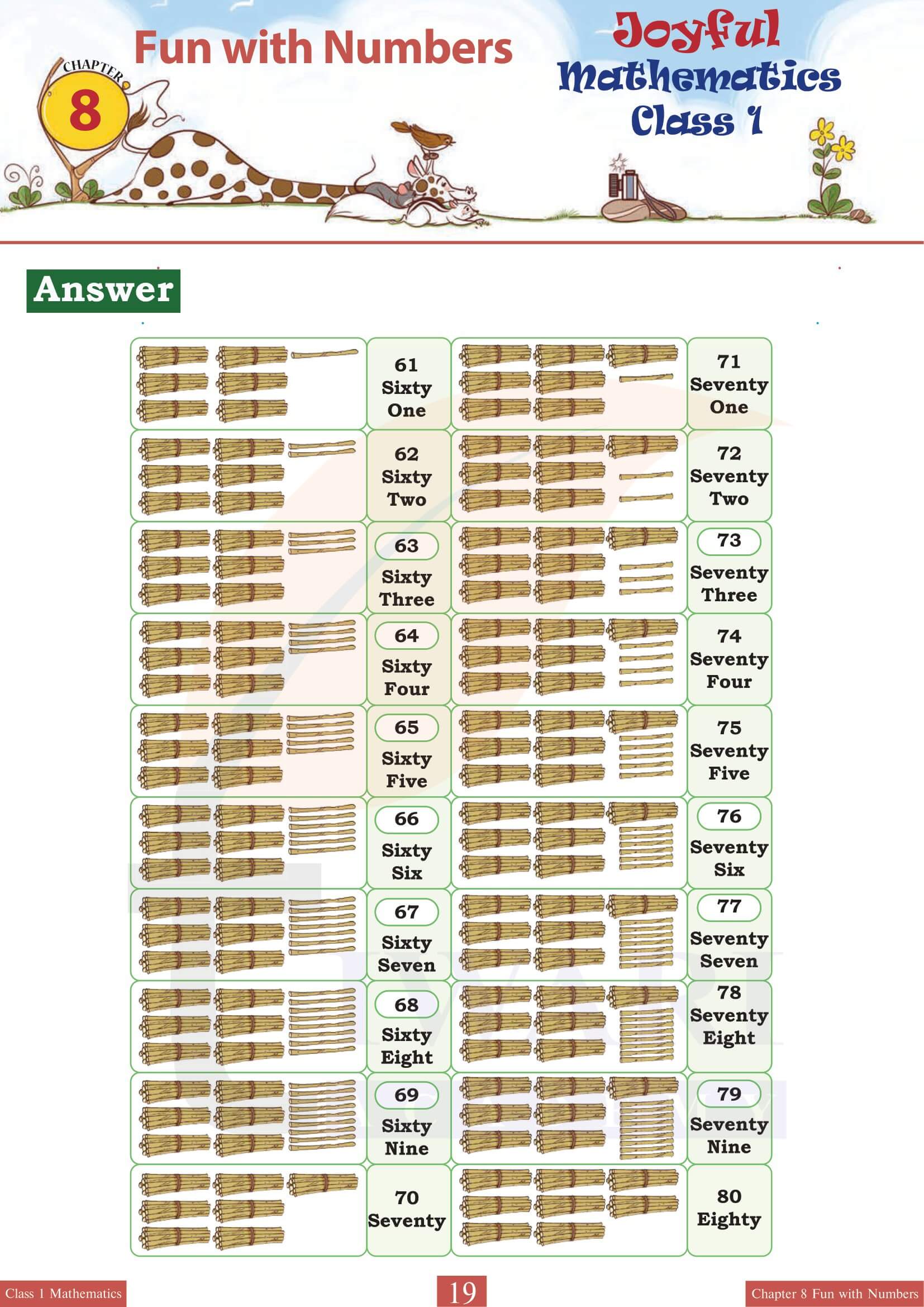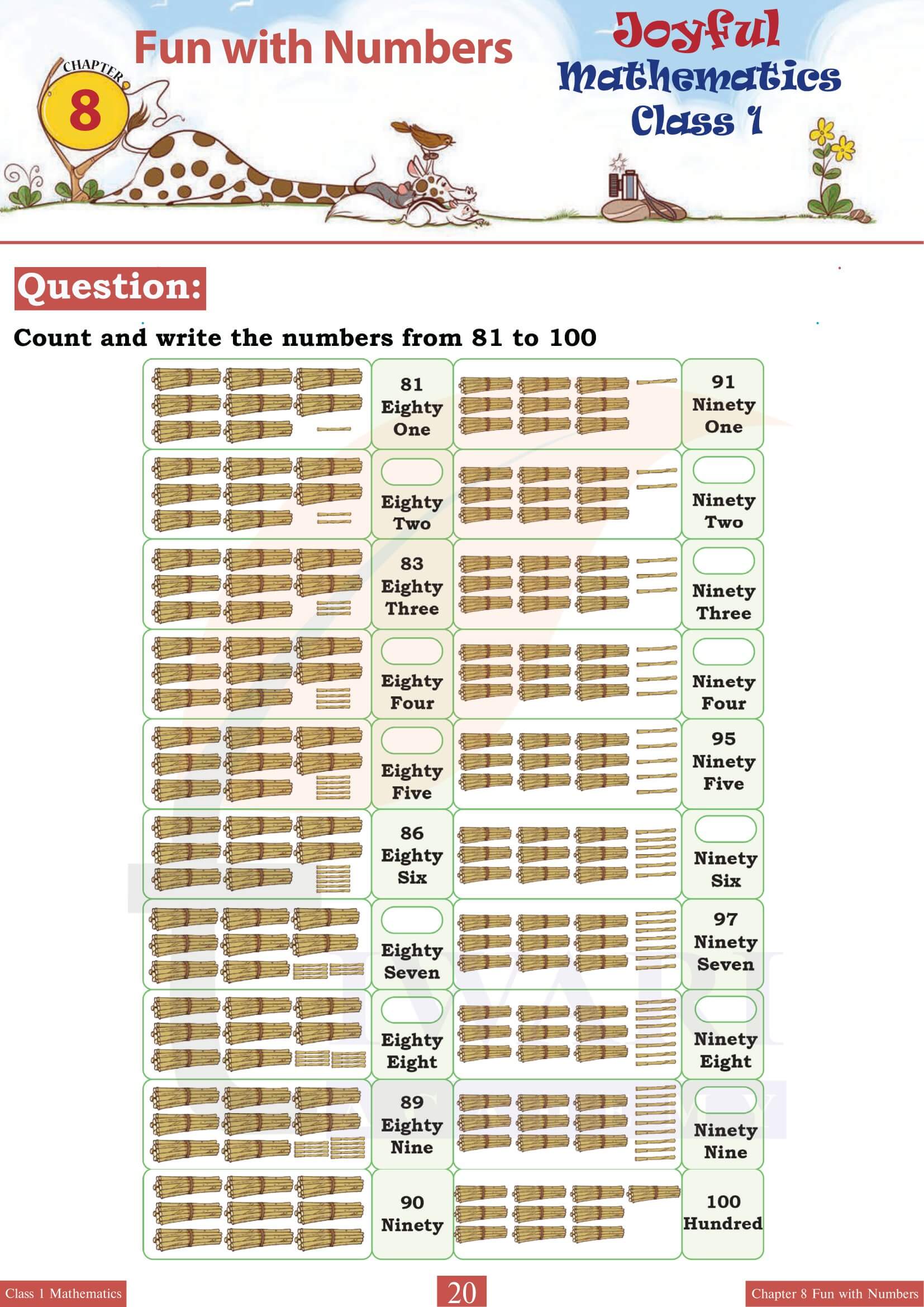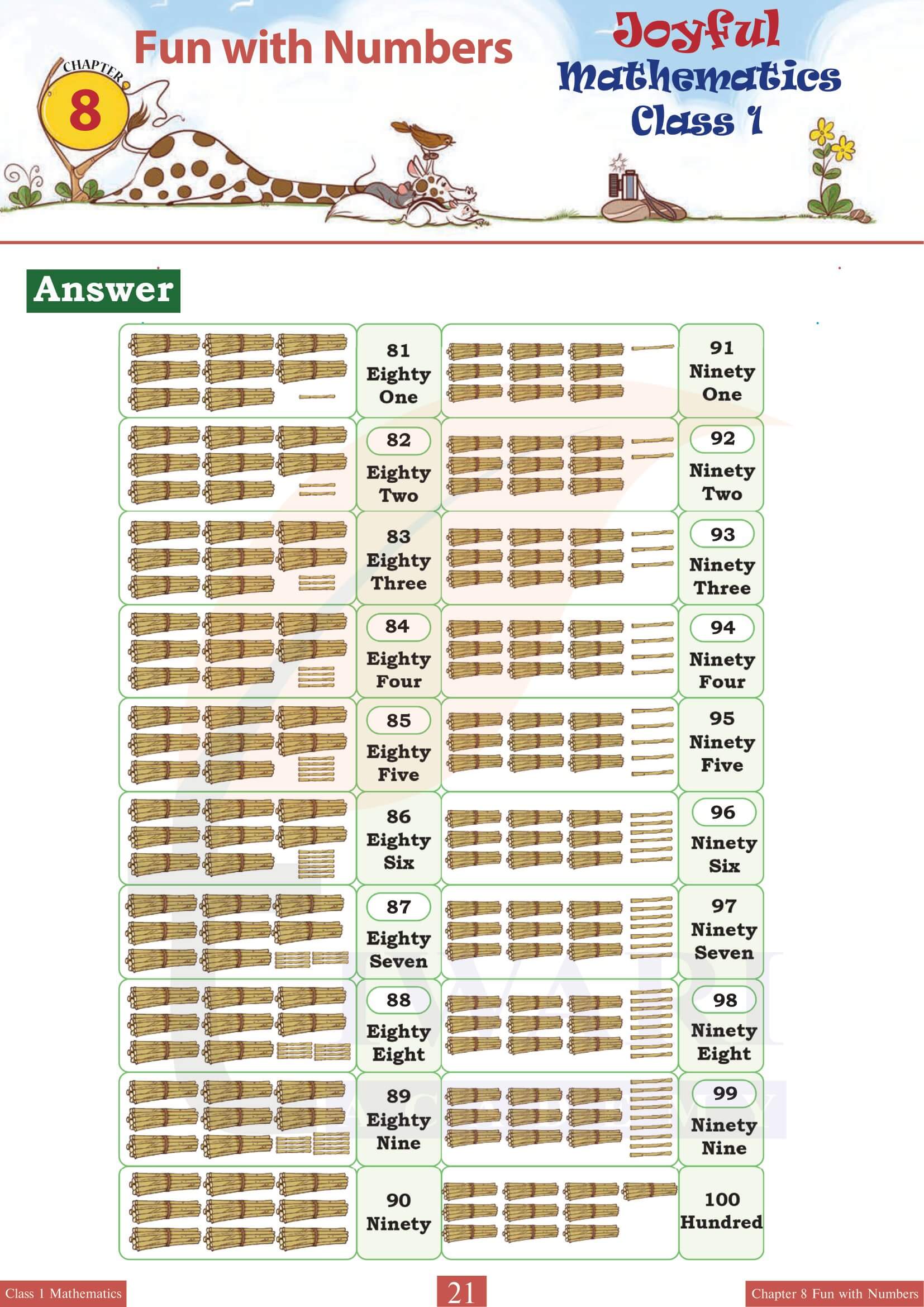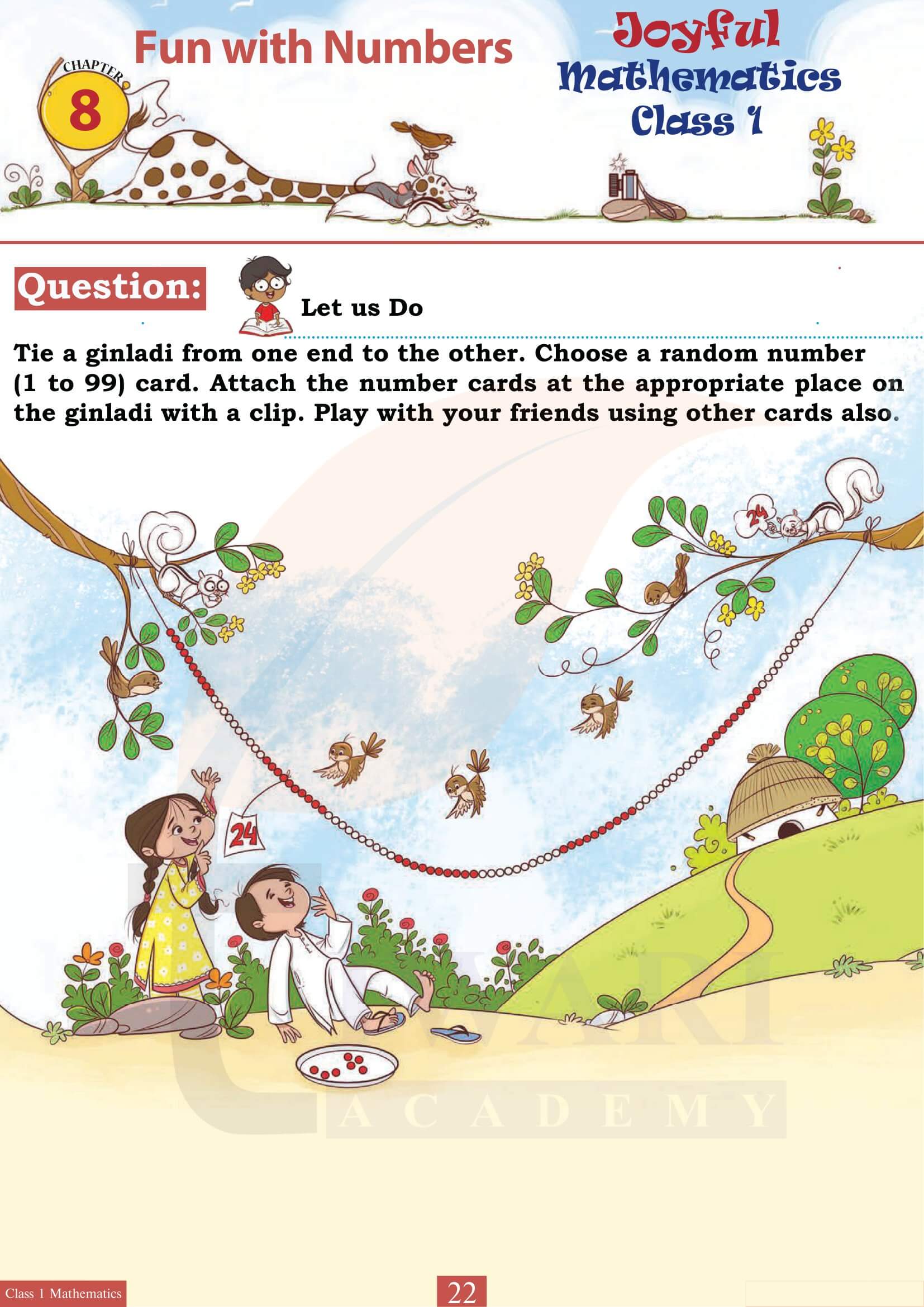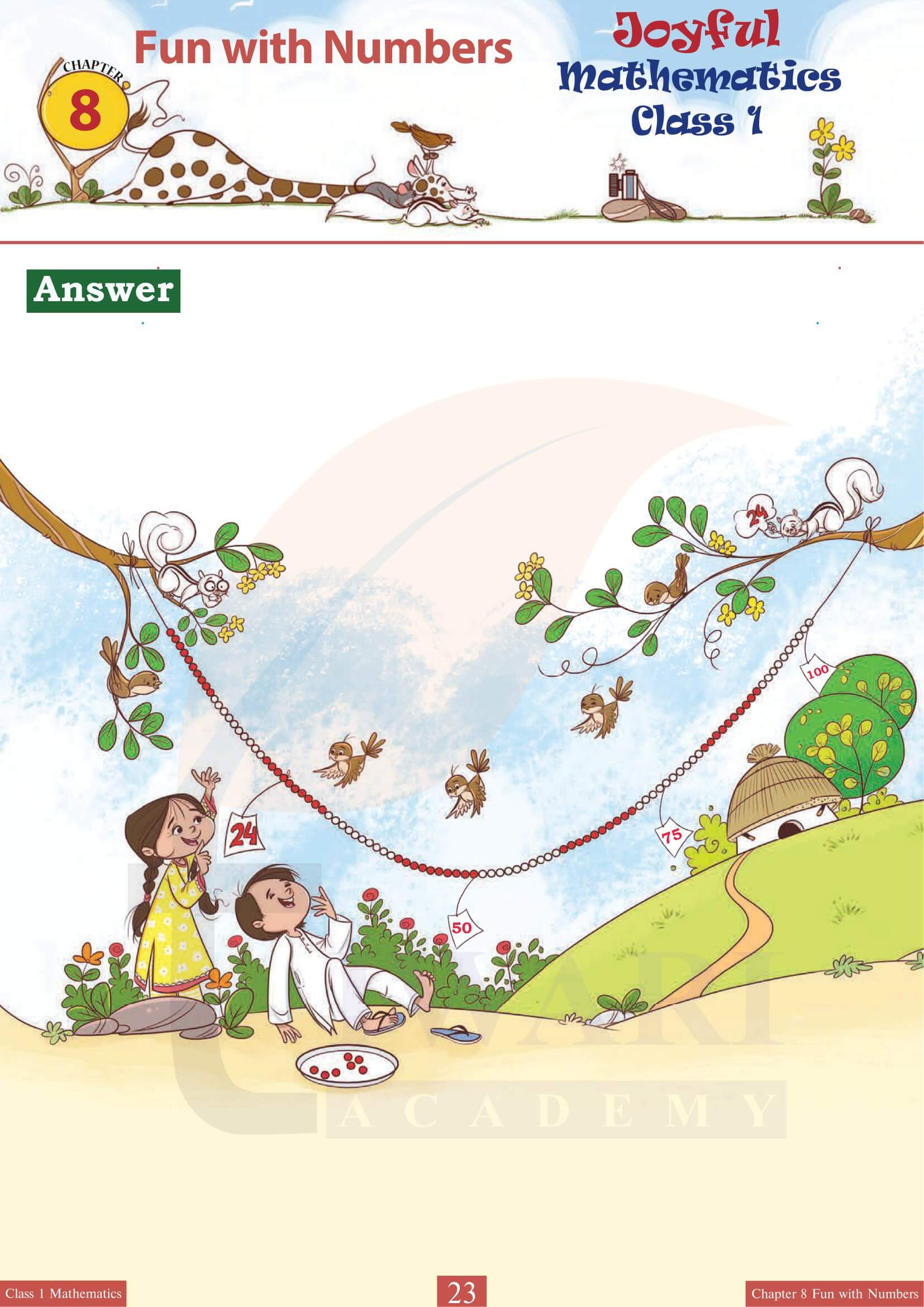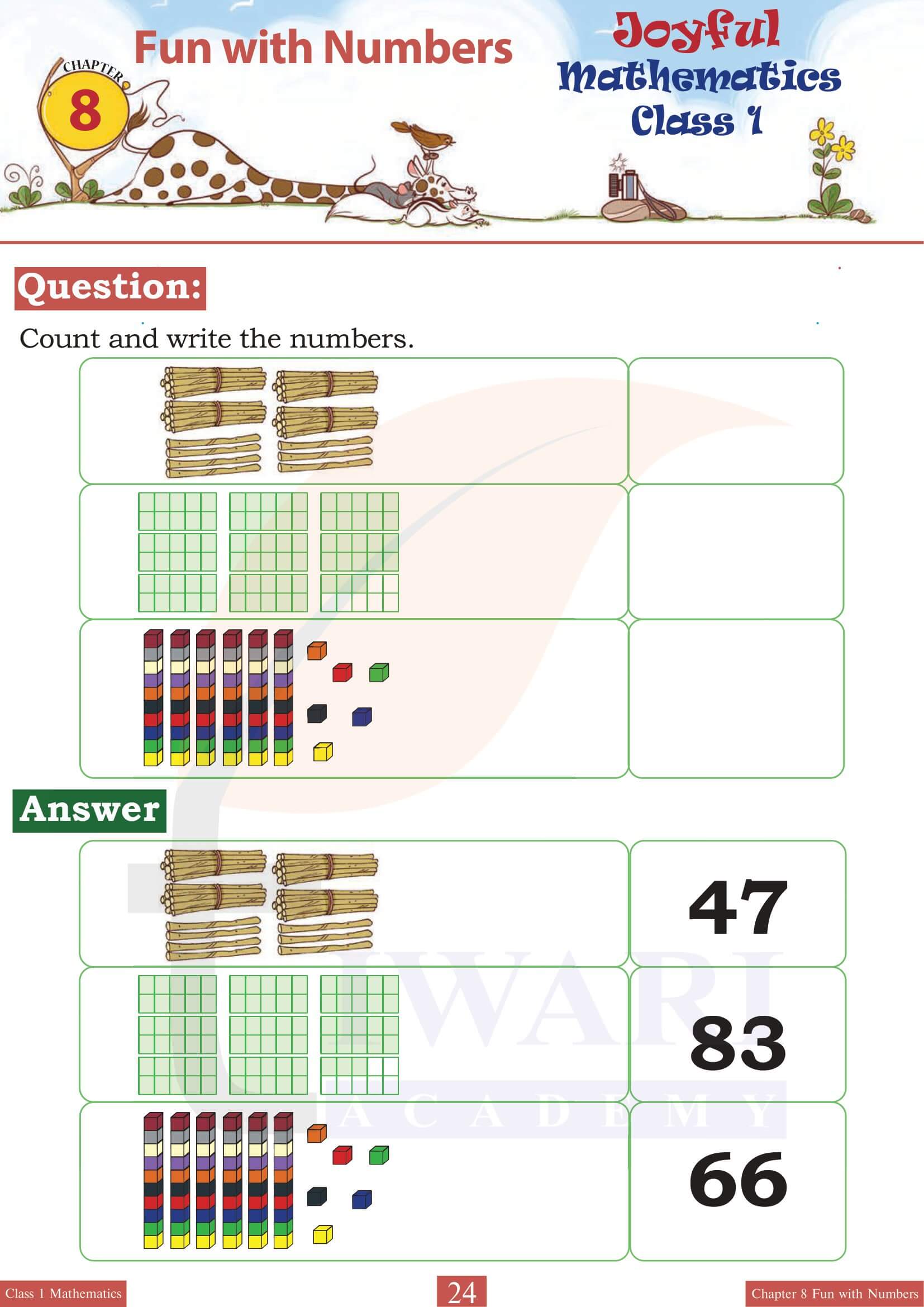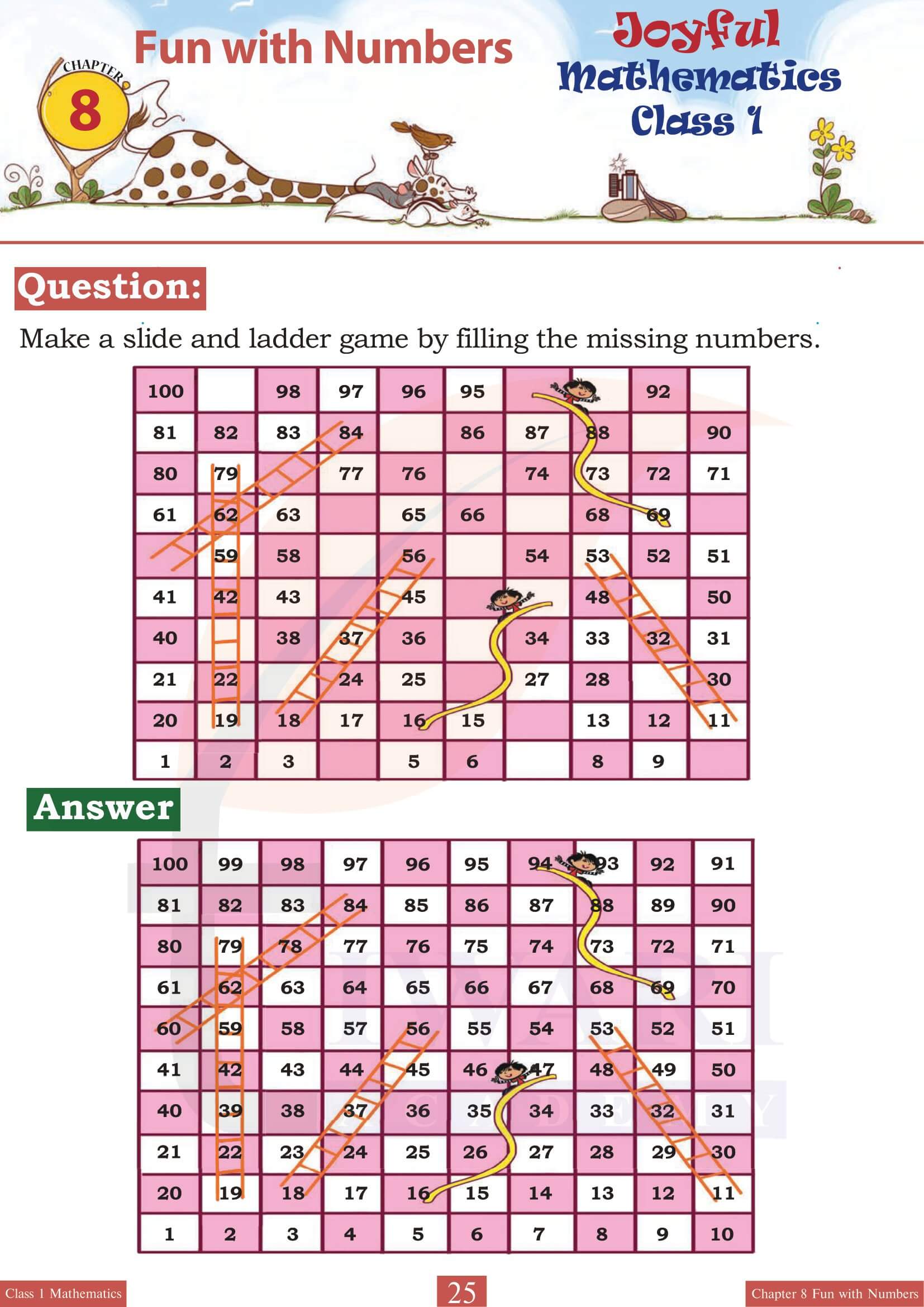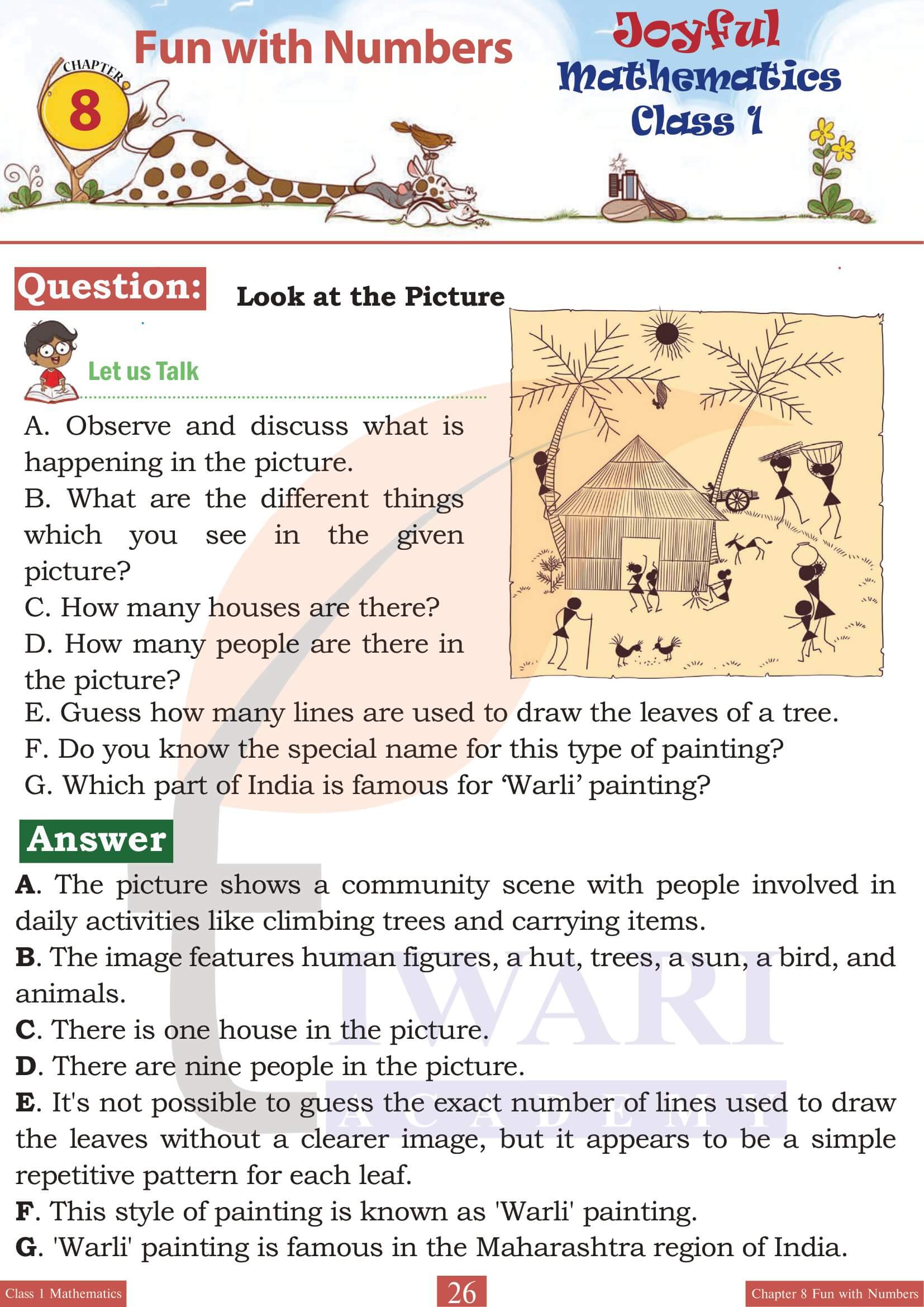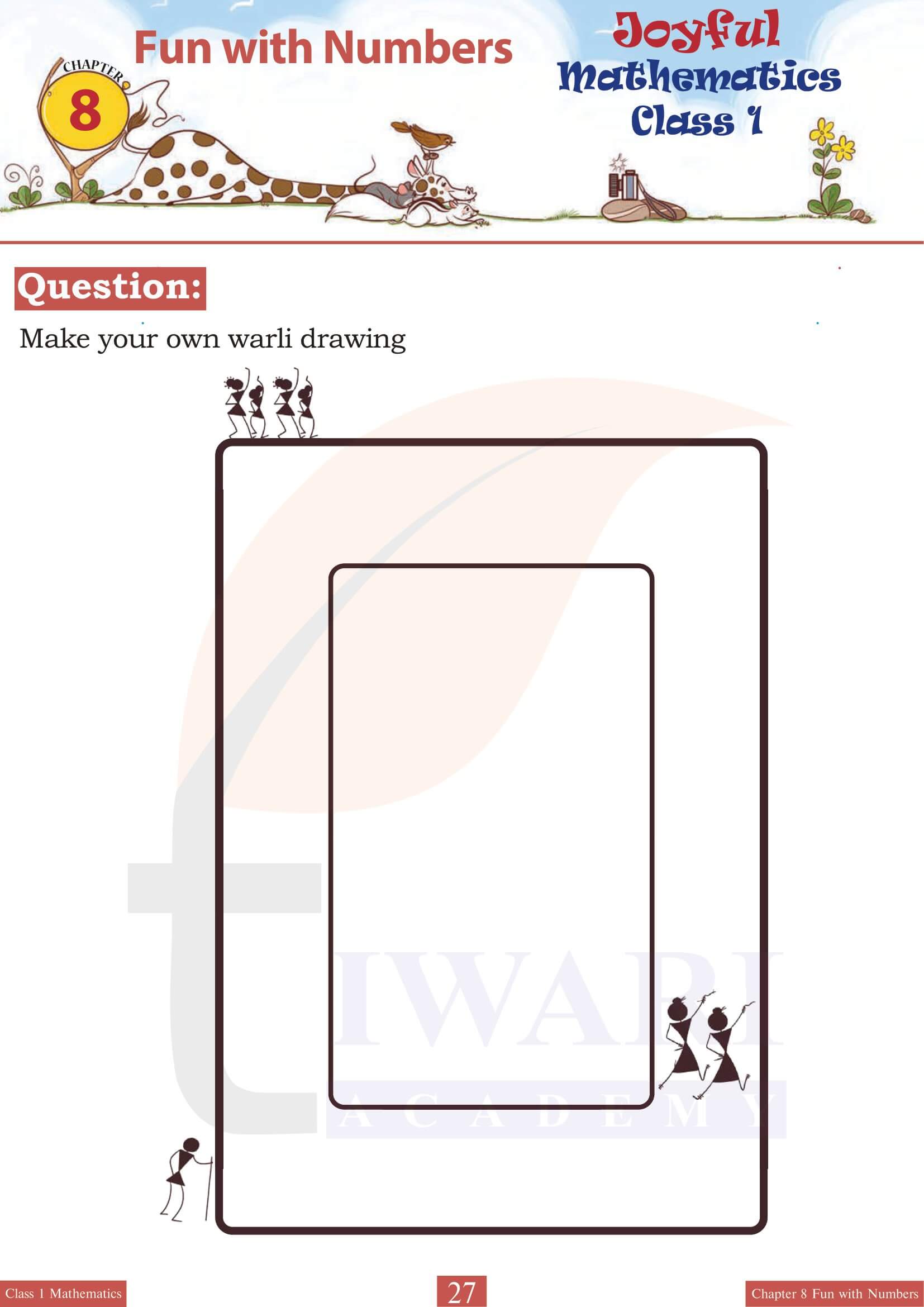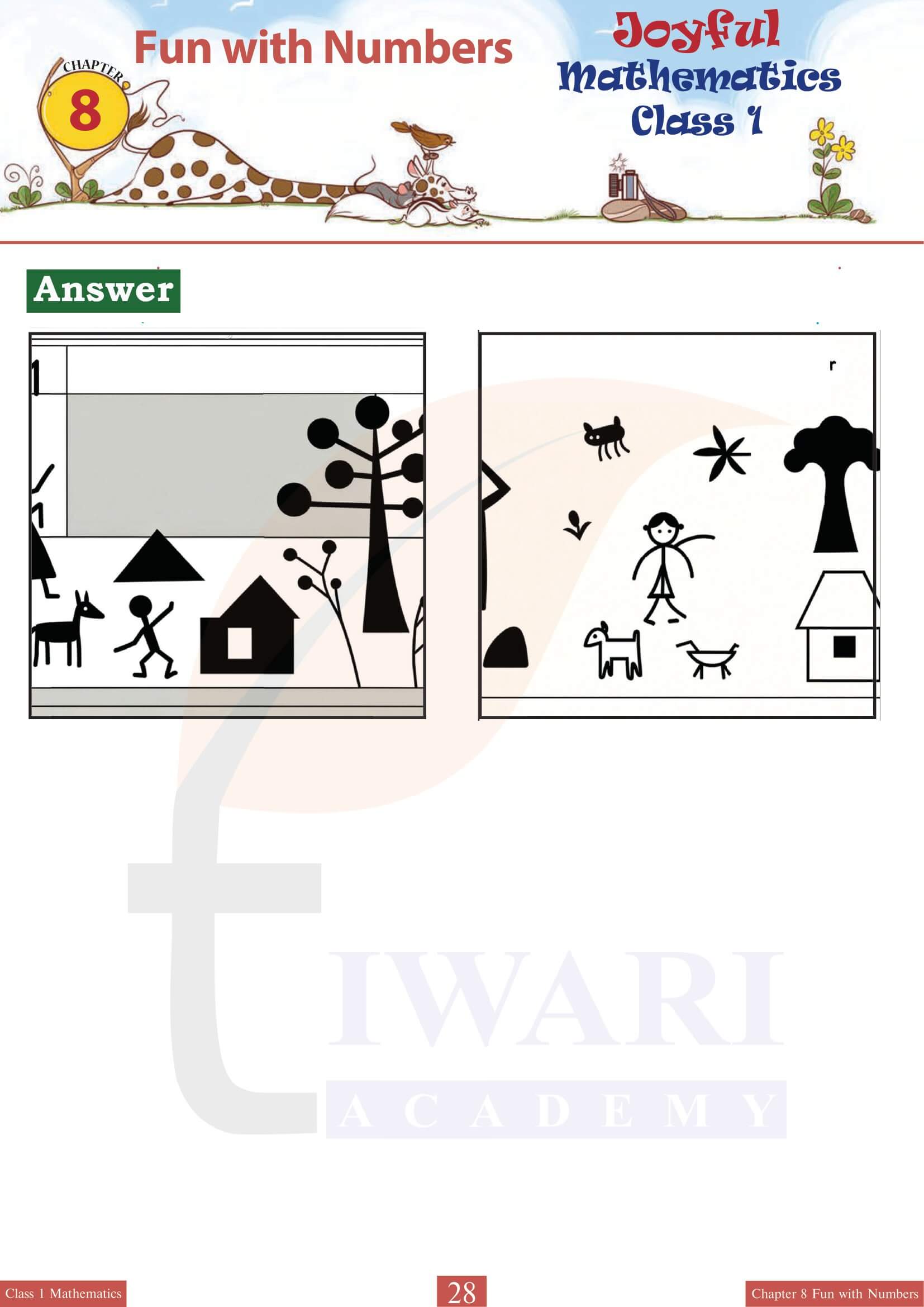NCERT Solutions for Class 1 Maths Joyful Chapter 8 Fun with Numbers (Numbers 21 to 99) updated for academic session 2025-26 in Hindi and English Medium. All the question answer of class 1 Joyful Maths chapter 8 is revised according to NEP 2020.
Class 1 Maths Joyful Chapter 8 Fun with Numbers
Class 1 Maths Chapter 8 Fun with Numbers (Numbers 21 to 99)
Chapter 8 “Fun with Numbers” of the Class 1 Maths Textbook “Joyful” is designed to introduce young learners to the fascinating world of numbers through engaging activities and conceptual explanations. This chapter marks an important step in building a solid foundation in mathematics for first graders, aiming to ignite a sense of curiosity and enjoyment towards the subject.
The Class 1 Maths Joyful Chapter 8 begins with a colorful and interactive approach to numbers, using a variety of objects and everyday scenarios to help children understand and relate to the concepts being introduced. It focuses on the numbers 1 through 10, providing a thorough exploration of each number through counting, identification, and simple calculations. This foundational work is critical for developing number sense, a key skill in early math learning.
Key Features of Class 1 Maths Chapter 8
One of the key features of “Fun with Numbers” is its emphasis on interactive learning. The textbook includes a range of activities such as matching games, puzzles and simple problems that require the students to count objects, recognize number patterns and perform basic addition and subtraction. These activities are designed not just to teach numbers, but to also develop problem-solving skills and critical thinking in young learners.
The chapter 8 of class 1 mathematics, cleverly incorporates stories and characters that children can relate to, making the learning process more engaging and less intimidating. For example, it might use a story about animals in a forest to teach counting or a tale of a magical garden to explain number sequences. This narrative approach helps in keeping the students’ attention and making abstract concepts more tangible.
Significant Role of Chapter 8
Visualization plays a significant role in this chapter. It uses bright and appealing illustrations to represent numbers and operations, aiding in the comprehension of mathematical concepts. Visual aids such as number lines, charts and pictorial representations of problems are employed to make the transition from concrete to abstract thinking smoother for first graders.
“Fun with Numbers” also introduces the concept of comparison and the terms “more than” and “less than” through illustrative examples and activities. Children learn to compare quantities and understand basic inequalities, which is fundamental to their mathematical development.
Another important aspect of the chapter is its focus on the oral counting. Students are encouraged to practice counting aloud, which helps in reinforcing number sequences and improving their numerical memory. This activity is complemented by exercises that ask students to write numbers, fostering a dual approach to learning through both verbal and written practices.
Concepts of Fun with Numbers
The chapter acknowledges the individual pace at which children learn and offers diverse activities that cater to different learning styles. Whether a child learns better through visual aids, storytelling or hands-on activities, “Fun with Numbers” provides a supportive and comprehensive environment for exploration and discovery.
Towards the end of Class 1 Maths Joyful Chapter 8, there is a gentle introduction to the concept of zero and its significance in the number system. This is presented in a simple and understandable manner, laying the groundwork for more advanced mathematical concepts in the future.
Chapter 8 “Fun with Numbers” of the Class 1 Maths Textbook “Joyful” is meticulously crafted to provide a joyful and enriching mathematical experience for young learners. Through its interactive activities, engaging stories, and visual aids, it fosters an early love for numbers and sets the stage for a lifelong journey of mathematical discovery. The chapter not only teaches the basics of numbers but also cultivates skills like problem-solving, critical thinking, and creativity, which are essential for students’ overall development.
